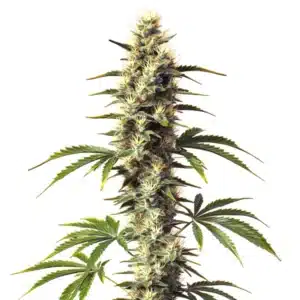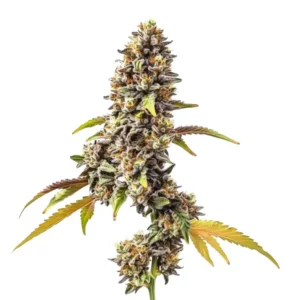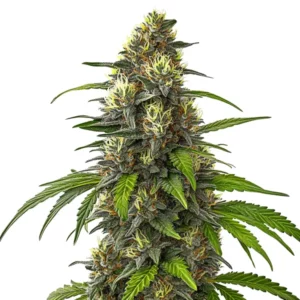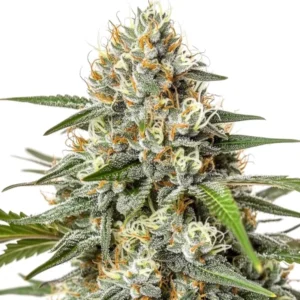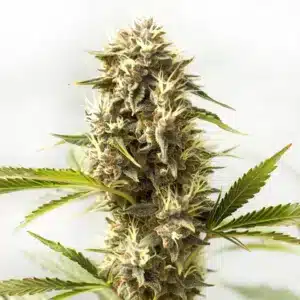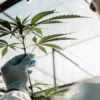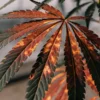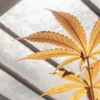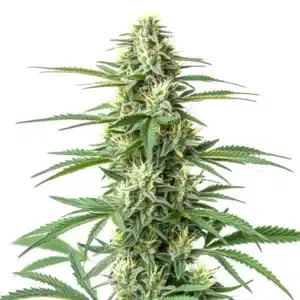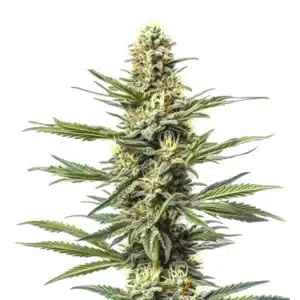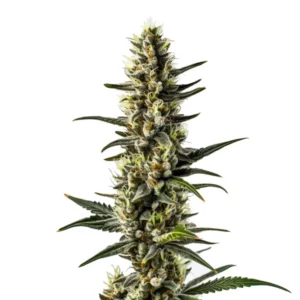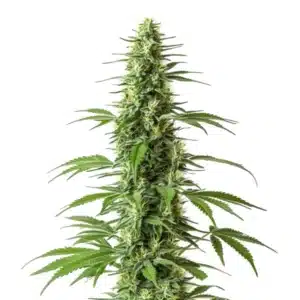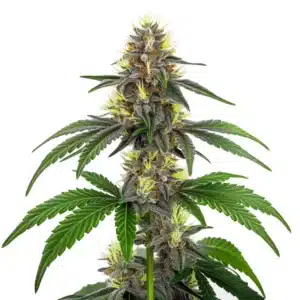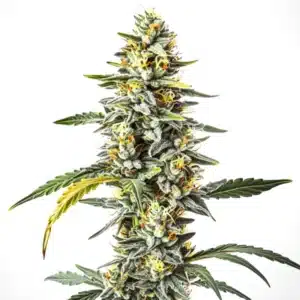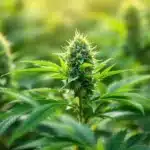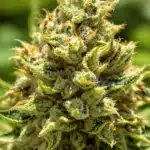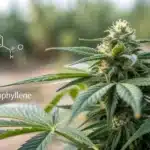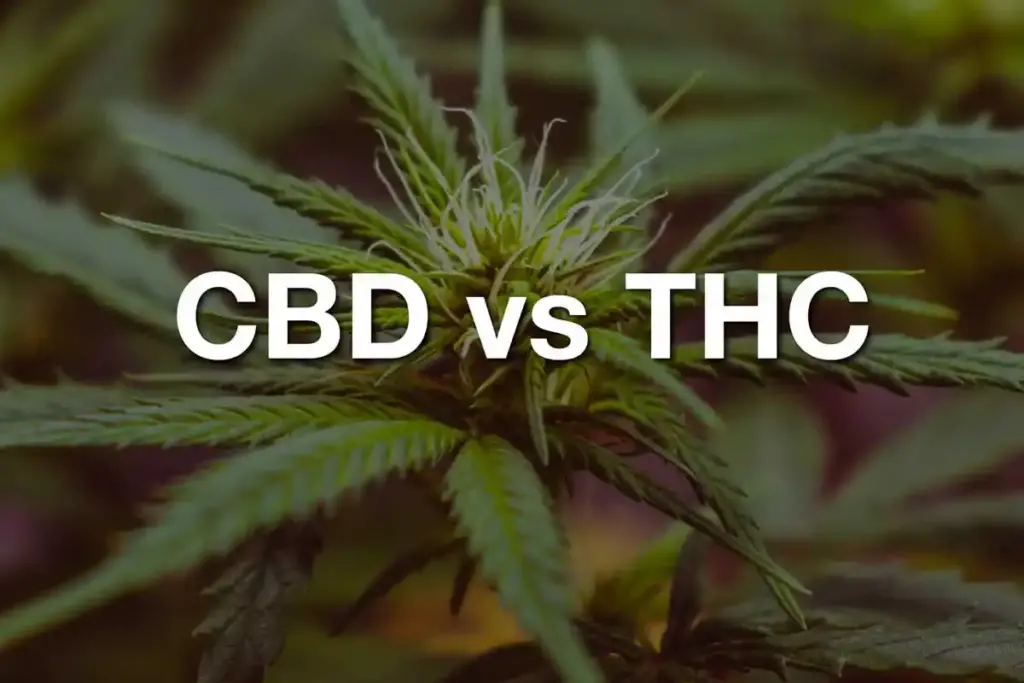
CBD vs THC
Are you curious about CBD, THC, and the benefits they might provide? We will explore the world of cannabinoids, with a special focus on CBD, THC, and the emerging compound THC-H. By the end, you’ll gain clearer insights into their differences and how they may affect your well-being. Let’s begin!
If you’ve spent time researching hemp, CBD, or THC online, you’ve likely encountered numerous articles that compare and contrast these three concepts. Many of these articles have titles such as “CBD vs THC: Which is Superior?” or “Hemp vs CBD: What Farmers Keep Secret,” but they often lack the information you’re seeking.
Recommended Strains
CBD Supreme Durban
|
|
CBD | 6% – 8% (Low) |
|
|
Type | CBD Feminized |
|
|
Yield | Medium |
|
|
Phenotype | 25% Indica / 75% Sativa |
Tahoe OG Auto
|
|
THC | 18% - 20% (Medium) |
|
|
Type | Autoflowering |
|
|
Yield | Low |
|
|
Phenotype | 60% Indica / 40% Sativa |
Recently, another cannabinoid has been making waves, THC-H. While it shares some similarities with traditional THC, it is said to have distinct properties that might offer new benefits for those exploring cannabinoids. We’ll touch on how this newer compound compares to CBD and THC, adding to the complexity of choosing the right product for you.
Discussing CBD, THC, and their effects can be perplexing. Although both substances originate from the same plant, do they both have psychoactive effects? Is there a distinction between CBD and THC? Are there any actual advantages to using CBD as opposed to THC?
Throughout this article, you’ll gain insight into
Once you expand your knowledge about these compounds derived from cannabis, it will become simpler for you to pose additional inquiries, look for the products you desire, and feel completely content with your choice.
Promos & Deals
What sets CBD apart from THC?
The main contrast between THC and CBD is their impact on the body. Typically, CBD won’t induce a high, while THC most likely will. CBD does not bind efficiently to the cannabinoid receptors that regulate essential functions like sleep, appetite, and the immune system.
These receptors, known as cannabinoid receptors 1 (CB1), are part of the endocannabinoid system (ECS).
On the other hand, THC binds well to CB1 receptors, leading to psychoactive effects since these receptors are part of the central nervous system, including the brain and spinal cord. When CB1 receptors are activated by THC, it produces a psychological response.
Generally, CBD doesn’t activate CB1 receptors; hence, it doesn’t alter sensory or perceptual functions. However, research suggests that if CBD and THC are taken together, CBD may weaken the binding of THC with CB1 receptors, thereby reducing THC’s psychoactive effects and the risk of becoming too high or intoxicated.
While cannabis plants contain both THC and CBD, hemp contains more CBD, while other types of cannabis have higher levels of THC. The majority of hemp plants consist of CBD, and legally, cannabis can only classify as hemp if its THC content doesn’t exceed 0.3 percent.

Therefore, there are a few fundamental between CBD and THC distinctions
- CBD does not have psychoactive effects, whereas THC does
- THC binds to CB1 receptors, whereas CBD cannot
- CBD is predominantly present in hemp, while other cannabis plants have higher levels of THC
When cultivating other forms of cannabis, farmers selectively breed the plants to produce higher levels of THC than other cannabinoids, resulting in a more potent psychoactive impact.
What is the definition of Cannabis?
Cannabis belongs to the Cannabaceae family, which is a flowering plant consisting of three primary species: Cannabis indica, Cannabis ruderalis, and Cannabis sativa. Both hemp and marijuana are categorized as Cannabis sativa plants, but according to federal law, hemp plants have a THC concentration of only 0.2 to 0.3 percent.
Any cannabis plant that contains a high level of THC, or at least more than 0.3 percent, is classified as marijuana.
Hemp plants grow tall, reaching around four meters, and have thin, elongated leaves. In contrast, marijuana plants are usually only two meters tall and have broad, short leaves. Hemp has higher amounts of CBD, which is useful for legal CBD products, whereas marijuana contains more THC for medical and recreational purposes.
The term “marijuana” was first used in the 1900s as the notoriety of cannabis grew, and it still has controversial connotations today. Hemp is also known as industrial hemp and has various uses ranging from paper to ropes, textiles, and clothing.
In summary, we have discussed the contrasting effects of CBD and THC, and we have clarified that CBD predominantly comes from hemp, whereas THC is more prevalent in marijuana. However, what exactly are CBD and THC?
THC – the Psychoactive Compound in Cannabis
THC is the compound in cannabis that causes psychoactive effects. Commonly reported effects include enhanced senses, distorted perception of time, reduced motor skills, dry mouth, red eyes, paranoia, and fatigue. Delta-9 THC is the most common type of THC and is formed when natural THC is heated and binds to receptors in the endocannabinoid system.
Edibles create 11-hydroxy-THC, which is stronger and longer-lasting than Delta-9, leading to more intense effects. While medical uses for THC are still being researched, it is believed to increase appetite, manage sleep issues, anxiety, and inflammation. In comparison to CBD, THC is the psychoactive cannabinoid, and Delta-9 THC is the most common type formed when exposed to heat.
What does CBD stand for?
CBD, another compound found in cannabis, differs from THC in that it does not produce a high. In fact, there is evidence that it may even counteract the effects of THC, potentially helping those who have consumed too much of the latter. While researchers are still working to fully understand CBD’s benefits, many people are already using CBD products to manage everyday stress, promote exercise recovery, and support overall wellness.
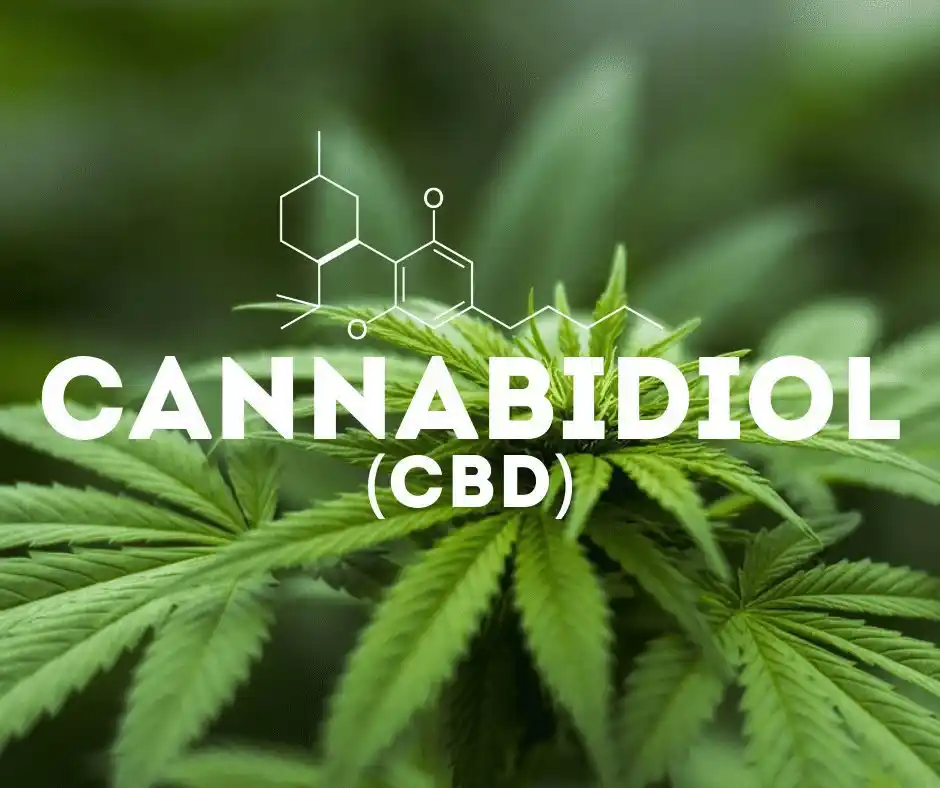
CBD has its own unique characteristics, including its non-psychoactive nature and potential for promoting health and wellness. It is just one of over 100 compounds found in cannabis, and while it shares a similar molecular structure with THC, its different chemical arrangement produces distinct effects.
What are the differences in the chemical structures between CBD vs THC?
CBD and THC are two naturally occurring chemical elements found in cannabis and belong to a group of around 113 compounds consisting of bi- and tri-cyclic structures. Despite having the same molecular formula, which consists of 21 carbon atoms, 30 hydrogens, and two oxygens (C21H30O2), they have different atomic arrangements, making them structural isomers.
CBD and THC share the same biological conversion process, starting with cannabigerolic acid (CBGA) and then cyclizing into tetrahydrocannabinolic acid (THCA) and cannabidiolic acid (CBDA) via their respective synthases. Both compounds have cyclic structures; however, CBD has an open ring with an alkene and hydroxyl group, while THC has a closed cyclic ring within an ester group.
This subtle difference in molecular structure leads to unique physiological properties for each compound. Despite their molecular similarities, their molecular mass differs slightly, with CBD having a mass of 314.464 g/mol, and THC 314.469 g/mol.
What are the chemical characteristics of CBD Vs THC?
Similar to other cannabinoids, CBD vs THC have low solubility in water but good solubility in organic solvents like alcohols and lipids. In cannabis, THC vs CBD exist as a mixture of acidic forms and require decarboxylation and chemical alteration through heating.
THC has a strong affinity for glass and plastic, which is why it is usually prepared and stored in raw or organic solvents with glassware to avoid losing its potency.
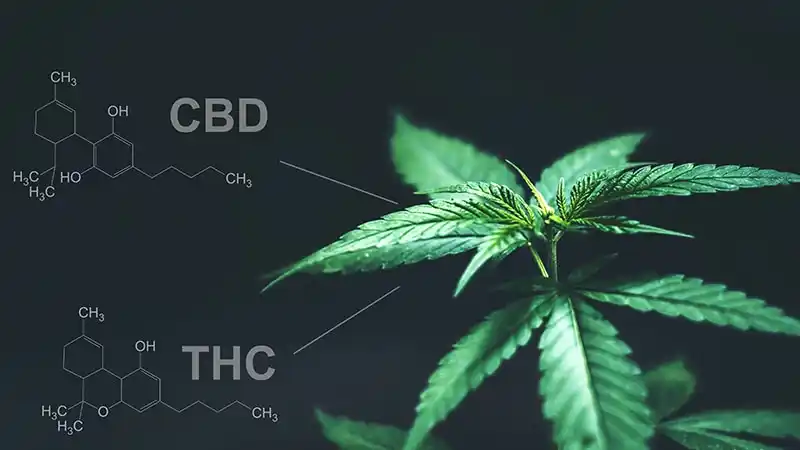
When it comes to the CB1 receptor, THC works as a potent partial agonist, stimulating the receptor and producing the intoxicating effects associated with cannabis. In contrast, CBD functions as a negative allosteric modulator, changing the shape of the receptor and making it difficult for THC and other CB1 activators to stimulate it.
Furthermore, CBD does not bind to or stimulate the CB1 receptor, so it does not produce the psychotropic effects typically associated with THC.
What is the Interaction Between CBD vs THC Molecules?
CBD can moderate or inhibit the psychoactive effects of THC by preventing it from binding to the receptor, which is why CBD-rich products do not cause a “high” or euphoria, unlike THC-derived products.
CBD has also been observed to alleviate some of the short-term negative effects of THC, such as paranoia and memory impairment, and some research suggests that a combination of CBD and a low amount of THC may have therapeutic benefits without causing any negative or euphoric effects.
Despite these findings, there is still significant resistance to combining the two due to regulatory restrictions and the traditional medical community’s stance. However, the “whole plant” approach to cannabis consumption is gradually gaining traction, as it allows for the synergistic effects of various cannabinoids and other active components in cannabis, which is also known as the entourage effect.
When examining the molecular structures of CBD vs THC
CBD has an open cyclic ring with an alkene/hydroxyl group, while THC has a closed ring with an ester group. THC can bind well with CB1 receptors, but CBD cannot. CBD may reduce the negative effects of THC. When combined with other cannabinoids, CBD vs THC may provide better results through “whole-plant usage”.
By gaining a deep knowledge of the chemical properties, effects, and differences between THC and CBD, we can address questions with precision and clarity, avoiding any confusion between these compounds despite their apparent similarities.
Cannabis seeds rich in CBD vs THC
Now we will see which genetics are rich in THC or rich in CBD and which also maintain a balance between the two cannabinoids that we study in this article. For this reason, here we leave you 3 different weed genetics that you can grow to have a great experience either with psychoactive varieties orwith non-psychoactive strain.
CBD Supreme Durban
CBD Supreme Durban is a cannabis strain known for its balance levels of CBD and THC. This strain typically has CBD levels of around 8%-6%, making it a popular choice for users seeking the therapeutic benefits of CBD without the psychoactive effects of THC.
The THC content of CBD Supreme Durban is usually of 6%-8%, making it a non-psychoactive strain.
In terms of flavor and aroma, CBD Supreme Durban has a sweet and earthy profile, with hints of pine and citrus, for this reason is a spice taste.
The dominant terpenes in this strain are typically myrcene, pinene, and caryophyllene. Indoor yields for CBD Supreme Durban are typically around 1.64 oz/ft2, while outdoor yields can range from 17 oz/plant. This strain typically has a flowering time of around 9-10 weeks.
The effects of CBD Supreme Durban are typically described as a activation of the creativity with a energetic vibration, and a finish flight in a calm and relaxing state, without the intense high associated with THC-heavy strains. Users report feeling a sense of ease and relief from anxiety, pain, and inflammation.

Tahoe OG Auto – CBD vs THC
Tahoe OG Auto is a mostly indica autoflowering cannabis strain that provides a high THC level and a balanced user experience. The cultivation cycle of Tahoe OG Auto lasts about 10-12 weeks from planting to harvesting, making it a popular choice among growers who seek a quick and high-quality yield.
Regarding THC levels, Tahoe OG Auto has an average THC content of 18% to 20%, making it one of the most potent strains in the market. In addition, it also has low levels of CBD, making it a strain of good psychoactive potency and suitable for a variety of users.
On the other hand, Tahoe OG Auto is a genetics with a pine flavor, and citrus aftertastes plus woody tones. This autoflowering seed variety will yield up to 1.14 oz/ft2 in indoor grows, although outdoor gardeners should not be discouraged as they will harvest up to 5.29 oz/plant of buds.
As we already pointed out, the effects of Tahoe OG Auto are balanced and range from a state of euphoria to a mild relaxation.
Panama – CBD vs THC
The cannabis genetics of Panama is a pure sativa strain that originated in Central America. This variety is known for its high levels of THC, which can reach up to 11%-15%. The flavors and aromas that predominate in Panama are citrusy, sweet, and earthy, with a hint of pepper. The terpenes that dominate this strain are limonene, pinene, and terpinolene.
The effects of Panama are mainly cerebral, producing an energetic and euphoric effect that is perfect for creative and social daily activities. It can also help improve focus and motivation, making it ideal for users who need an energy boost during the day.
To grow Panama outdoors, it’s best to choose a warm and tropical climate, as this variety needs a lot of sun and heat to grow. States in the southern United States like Florida and California are ideal for growing Panama outdoors. In the northern United States, it’s best to cultivate this variety in greenhouses to maintain a constant temperature.
The optimal time for growing Panama outdoors in the northern United States is during the summer, from June to September. Some states where recreational cultivation is legal and where Panama can be grown include Colorado, Washington, and Oregon.
These states have laws that allow residents over 21 years of age to cultivate a limited number of plants in their homes for personal and recreational use.
As cannabis cultivators, it’s key to have access to high-quality seeds that yield plants with optimal levels of THC and CBD. Cultivating THC-rich plants can result in strong psychoactive effects and a pleasurable, relaxing consumption experience. Conversely, growing plants with high CBD content may have beneficial therapeutic effects for a variety of medical conditions.
At Blimburn Seeds, we take pride in offering high-quality cannabis seeds that ensure a satisfying cultivation and consumption experience. With over 20 years of experience in the cannabis industry, our genetics experts work tirelessly to develop unique and exclusive strains that yield high-quality plants with balanced cannabinoid profiles.
If you’re interested in purchasing quality cannabis seeds for your cultivation projects, we invite you to visit our online store. We would love to assist you in growing exceptional cannabis plants!


